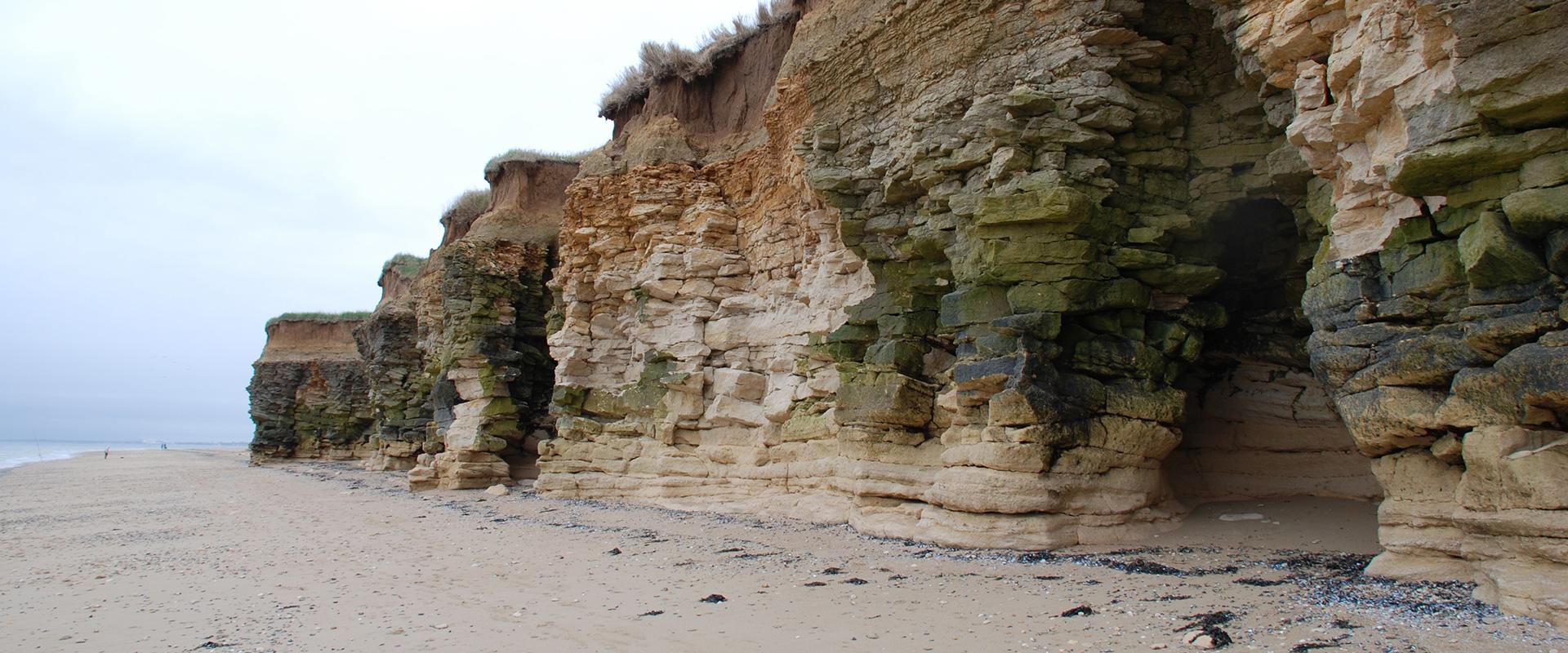The cycle of rocks: how do rocks form?
Transcription
THE ROCK CYCLE
In geology, there are 3 main rock types: sedimentary, igneous and metamorphic. Let's start with sedimentary rocks. Sedimentary rocks form on the Earth's surface due to the weathering and the erosion of rocks on the surface. Rocks that you see cropping out are attacked by wind, water and ice which break them down and the particles formed are blown away by the wind or swept away by rivers and sediment is deposited. Sand, for example. These sediments accumulate and form layers, strata. And by accumulation, the first layers will be buried several kilometres down and will transform, the particles will be compacted and the water between the grains will evaporate and the remaining water will cement the grains together. This is sandstone. The sand was cemented by compaction. There are other types of sedimentary rocks. Sandstone and clay result from the transportation and sedimentation of particles. Then there's limestone, which is a sedimentary rock but of biological origin. Chalk, for example, is an accumulation of micro shells, tiny organisms called plankton, and this accumulation formed what we call biological rock. If the rock is buried very deep, dozens of kilometres down, compaction occurs, but heat and pressure also transform and deform the minerals. These rocks become metamorphic rocks. The rock remains solid, but increasing pressure and heat transforms the minerals into this type of rock, with foliation like this. This is a metamorphic rock, schist, that results from the transformation of minerals, initially clays, into other minerals, micas, which form this rock foliation. As the rocks are buried deeper and deeper, pressure and high temperatures make them melt, creating magma, molten rock. Because of its density, the magma rises up through the Earth's crust, cools and sets, and crystallization occurs. When this crystallization occurs deep down, at a depth of several or dozens of kilometres, it is a slow process that forms rocks with large crystals, igneous rocks called plutonic rocks, like this, granite or gabbro. If the magma rises to the surface, it forms volcanic rocks, volcanoes, and these rocks cool rapidly. This is basalt, volcanic rock, and no grains are visible because the rock solidified rapidly. The magma solidified instantly, and thus no crystallized minerals are visible to the naked eye. But these two rocks are formed by crystallization, the cooling of magma. The chemical composition of molten rock, magma, has high or low silica, iron or magnesium content and according to the percentage of each when cooling, these elements combine to make minerals and thus different minerals form, and the result is different rocks. So there are rocks with a high silica content, such as granite or its equivalent, rhyolite, in a volcanic environment, and rocks with a much lower percentage of silica and richer in iron and magnesium, are gabbros, like this rock, much darker rocks. Their volcanic equivalent is basalt. In the rock cycle, sedimentary, metamorphic, or igneous rocks, including volcanic rocks, at each stage, the rock can rise to the surface. Sedimentary rocks, such as sandstone, sandstone cliffs or limestone cliffs like in Etretat, are made of rocks that were compacted. Then, due to movement of the tectonic plates, these rocks rose to the surface. So sedimentary or metamorphic rocks can resurface. They don't necessarily melt, they will change, erode and be recycled due to these phenomena. Sandstone or limestone cliffs will erode, schist or granite cliffs too, generating new particles that will form new sediments. Granite can be found on the summit of the Mont Blanc, at over 4,000 m above sea level, even though it was formed 20, 30, or 40 km underground. In geology, time, the speed of phenomena, is very important. We think in terms of millions or billions of years. What is the scale of these transformations? Erosion, transportation and sedimentation of particles is continual. We observe it today, in rivers, in the action of waves, etc. It's an ongoing process. The transformation of this sand into sandstone takes dozens of millions of years. It is a very slow process, and it takes dozens of millions of years to transform this sandstone into metamorphic rocks and likewise, the fusion of these rocks also takes time. Time plays a role in the difference between the rapid cooling of magma in volcanic rocks, which is almost instantaneous as you can see during a volcanic eruption, it's a question of several hours or days, whereas the cooling of a plutonic rock takes several hundred thousand or even millions of years. The cooling is much slower. These geological phenomena are counted in millions of years. And we estimate that for a rock to be totally recycled takes several dozen or hundreds of millions of years.








They're everywhere. In the mountains, by the sea, in the countryside and in cities. There are thousands of varieties. They are more or less crumbly, grained and permeable. Some are composed of extraordinary minerals visible to the naked eye. Discover their history covering hundreds of millions of years.